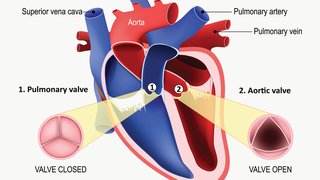
We’ve been told for years to get 150 minutes of moderate aerobic exercise a week – that’s half an hour a day, five days a week – to stay healthy. But new research suggests that may not be enough to prevent chronic heart failure.
A recent study by our researchers suggests that doubling, or better yet, quadrupling the amount of exercise one gets each week significantly lowers the risk of chronic heart failure, which is a growing public health concern.
Chronic heart failure occurs when the heart muscles become too weak to pump enough blood to adequately supply the body with oxygen. It is a long-term, progressive disease.
Heart failure symptoms include:
- Shortness of breath
- Weakness
- Cough
- Loss of appetite
While our country has made good progress in reducing heart attacks in recent years, the number of cases of heart failure has been increasing steadily. More than 5 million U.S. adults are currently living with heart failure. And according to a recent American Heart Association report, that number is expected to increase by an alarming 40 percent over the next 15 years. Women are more likely to develop heart failure than men.
What’s exercise got to do with it?
To figure out how exercise affects heart failure risk, my colleagues and I looked at 12 studies that were done in the U.S. or Europe that collected information on levels of physical activity and heart failure. The combined number of participants in these studies was more than 370,000, and 20,203 of these individuals developed heart failure during the course of the studies.
We found that the more exercise study participants took part in, the less likely they were to develop heart failure.
Individuals who exercised the government-recommended 30 minutes a day had a 10 percent lower rate of heart failure than those who did not exercise at all. Individuals who exercised at twice the recommended rate reduced their risk of heart failure by 20 percent, and individuals who exercised at four times the recommended rate reduced their risk of heart failure by a whopping 35 percent. Men and women benefited equally from exercise.
Our findings are in line with multiple exercise studies that point to “the more the better.” This is a reality, though we recognize that there is a point where one can’t “double down” anymore from their current exercise routine and still see benefit.
We understand that our findings may not seem like good news to some people. We all wish that 20 minutes of walking daily were enough to minimize cardiovascular risk. But the reality is that reasonably high-intensity exercise is necessary to achieve maximum benefit.
Double down on your workout
The take-away message from this study is that higher levels of physical activity are likely to be protective against heart failure.
From a public health standpoint, heart failure is a significant health care cost and a major reason for hospitalization and, frequently, re-hospitalization. For individuals, heart failure means both your activity level and your lifespan will be limited.
My family and I have recently pumped up our exercise regimen, adding more hours of regular exercise. You may want to have a conversation with your physician about the amount of exercise you’re getting and think about doubling down.
For tips on getting your family moving, check out Dr. Berry’s recent blog about keeping his five kids active and healthy. Check with your physician before starting any new exercise program.










